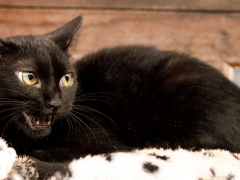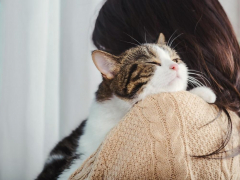
If you are a cat owner, you’ve probably noticed that sometimes your cat looks like they are up to no good. Cats often go through periods of sneaking around or hiding away only to jump out at your ankles when you least expect it! Given that this behavior can sometimes happen out of the blue, it can be very confusing for us as pet owners. So why do cats sneak around?
Cats' sneaky behavior usually stems from a combination of their hunting instincts and their instincts to avoid being hunted themselves. Sneaky behavior often manifests as play when cats hide, then pounce on something. Sneaking around and hiding can sometimes be a sign that a cat is scared, in pain, or feeling unwell.Quick Overview
Cats Are Natural Hunters
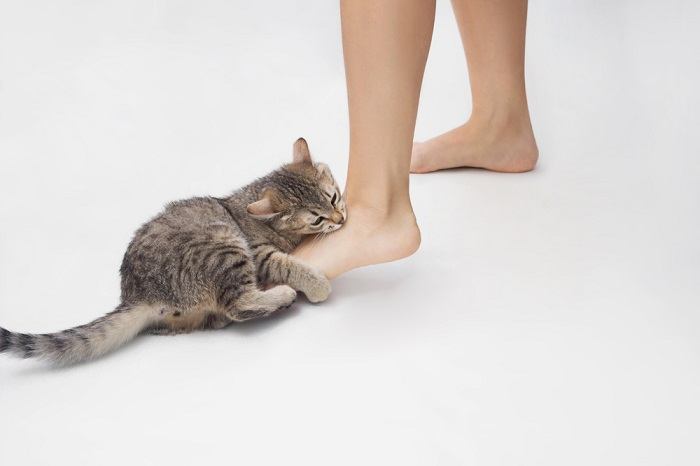
It might be cute when a kitten “hunts” your feet, but it’s best to discourage this behavior as it can become problematic as your cat grows bigger.
No cat owner will be surprised to learn that cats are natural-born hunters. Even indoor-only cats show a strong hunting drive during play with their owners, pretending to kill toys or even your feet from time to time. In the wild, cats regularly hunt throughout the day, sneaking slowly and cautiously up on the small animals they hunt as prey before pouncing.
Being sneaky and quiet is key so cats aren’t detected. It can make the difference between a full tummy and an empty one when they are hunting for their next meal. For most domesticated cats, their only worry is when the food bowl will be topped up. Even so, this natural hunting drive is still present, so you might notice your kitty stalking and pouncing on their favorite toy instead as a way to meet this behavioral drive.
Also Read: How Do Cats Hunt?
Cats Are Both Predators And Prey
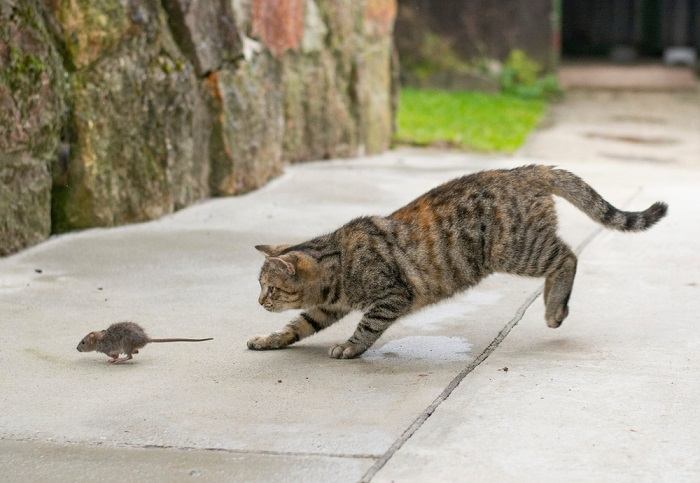
Most people think of the predator aspects of cats, but domestic cats are also prey to larger animals.
It might come as a surprise to many pet parents, but did you know that cats are actually also prey species? Domestic cats have their own predators that might hunt and even kill them, so cats need to have natural abilities to avoid such dangers. Predators for domesticated cats include everything from coyotes and foxes to large birds of prey.
Even if your cat lives their whole life indoors, these natural defensive behaviors are hardwired. If your cat picks up on something they perceive to be a threat (maybe a loud noise or a stranger entering the home), don’t be surprised if they switch on their “sneak-mode”!
Also Read: Why Do Cats Play With Their Prey?
When Is My Cat’s Sneaky Behavior Dangerous?
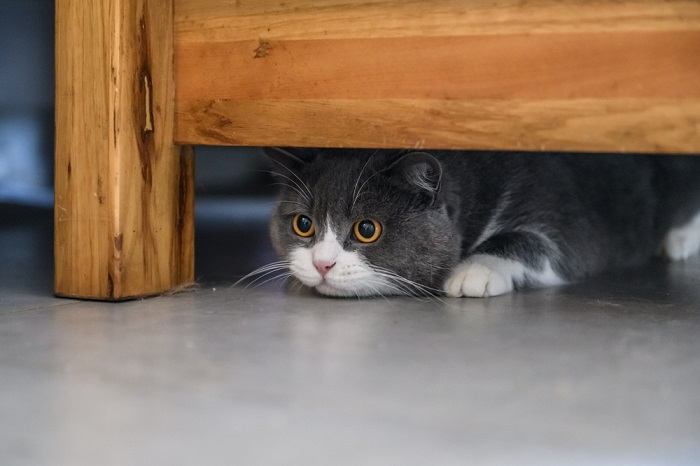
Some cats can become trapped or even injured when they hide away in some places without your knowledge.
Although a cat’s sneaky behavior often benefits them in life, there are times when we need to consider our cat’s safety when it comes to all their sneaking around. All cat owners should get into the habit of checking:
- Inside the washer and dryer before use
- Under your car’s hood before starting a journey if your cat goes outside
- Under reclining furniture before adjusting its position
- Inside wardrobes, closets, sheds, or garages before closing the door
Your cat’s natural sneaky instincts will entice them into dark or cozy hiding places. At times this can put your cat at risk. These risks are present for both indoor cats and outdoor cats. By checking out potential hiding spots before you use them, you can avoid injuries (or even inadvertently locking your cat behind a door).
Also Read: 10 Subtle Signs Your Cat May Be Sick
Why Do Cats Hide Randomly?
Hiding is a common behavior seen in most cats, though some cats hide more than others. Cats might suddenly choose to hide for several reasons, including:
1. Fear
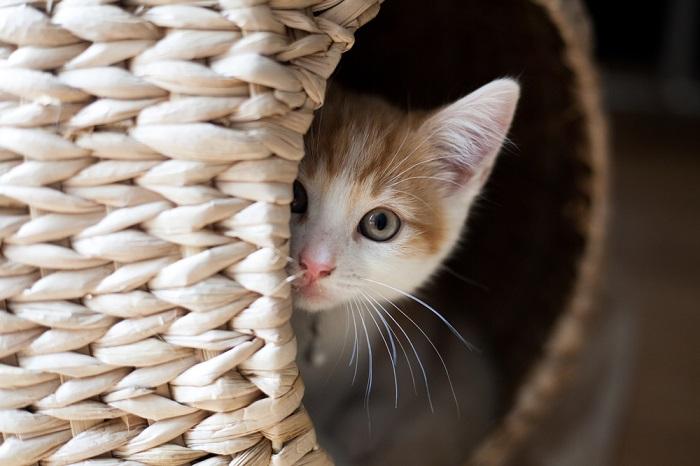
When cats are scared, they often retreat somewhere that feels safe.
If your cat runs off to hide, it might be frightened of something. Cats can be fearful of things that might not even register as a threat to humans, such as loud noises, construction, or a new person in the home. If you notice your cat sneaking off to hide, consider whether something has changed that might make your cat feel anxious.
Behavioral problems, including anxiety or fear, can be an issue for outdoor cats and house cats. Feline behavior is very complex, so working with a licensed animal behaviorist can be necessary to help your cat.
Also Read: 8 Ways To Help a Scared and Fearful Cat Be Confident
2. Play
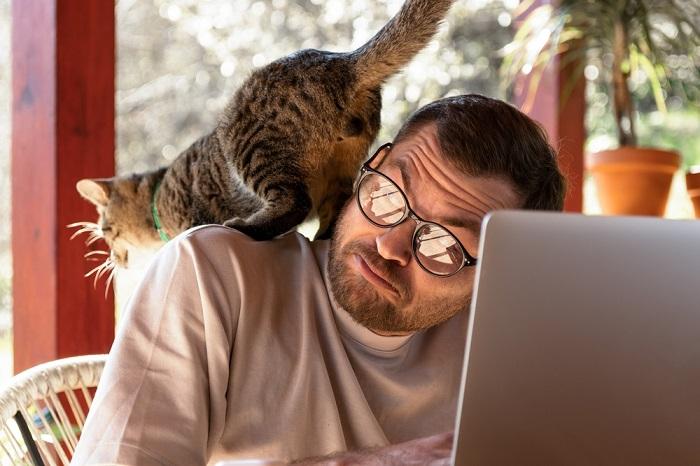
Sometimes hiding and sneakiness is all part of play, which in cats is often based on hunting behaviors.
Playtime for cats can often manifest as sneaky or stalking behavior as their natural hunting drives come through. Play is essential for kittens to learn hunting behavior and is something cats will continue to do well into adulthood. If you notice your cat hiding away, they might be doing this as part of a game.
Often, this will be followed by pouncing or stalking their favorite toy or even a frenzied five minutes of running around the house. Having lots of interactive toys or those containing catnip can help encourage your kitty to display these natural behaviors.
Also Read: How To Safely Play With A Cat, According To A Cat Behaviorist
3. Pain
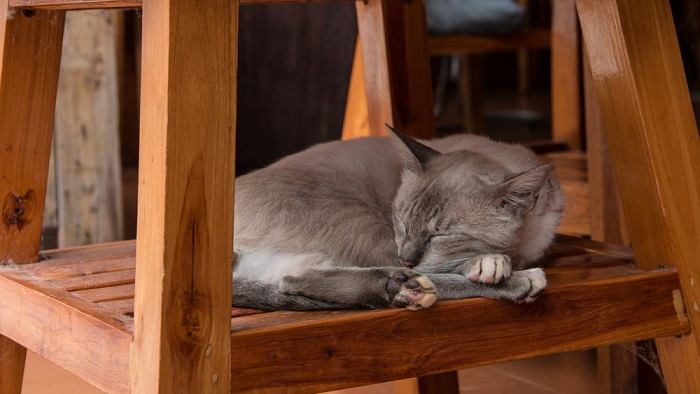
Signs of pain in cats are often very subtle, and might include avoidance behavior or hiding away.
Cats tend to be much less obvious in their displays of pain behavior when compared to their canine counterparts. This stems from the fact that cats are prey animals, and hiding signs of pain is an important defense strategy—showing pain demonstrates weakness, making an injured cat a more likely target.
Hiding away, especially if your cat seems less friendly, is playing less than normal, or is grumpier than usual, can be a sign that something hurts. If you are worried about your cat, speak to your local veterinarian for advice.
Also Read: How To Have A Better Relationship With Your Cat
4. Illness

Cats who are sick often play less, eat less, and hide away more.
Similarly to pain, if your cat feels under the weather, they might hide more than usual. Sometimes this might be accompanied by other signs of illness, such as vomiting or diarrhea, changes to appetite or thirst, or changes to urinating behavior, but not always. If you notice your cat’s behavior has changed at home, it is essential to speak to your veterinarian for advice.
Also Read: Do Cats Feel Sadness?
Why Is My Cat Suddenly Acting Weird And Hiding?
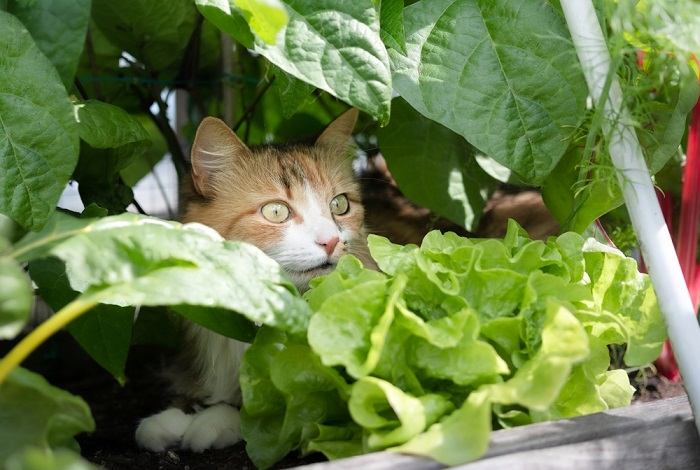
If your cat hides more than they used to, it’s important to schedule a checkup with your vet.
If you have noticed a sudden change in your cat’s behavior, it can point toward something more serious going on, especially if this behavior change becomes more pronounced or begins to happen more often. Pain or illness in cats can manifest in subtle behavior changes such as hiding away or becoming more skittish than usual.
If your cat is in pain, they are unlikely to vocalize (meow) or limp. Instead, the signs can be very subtle behavior changes. If you notice a sudden behavior change in your cat, it should always prompt a trip to your veterinarian.
Your vet can perform a physical examination and appropriate diagnostic tests to rule out any medical issues before referring you to a behaviorist if needed. You know your cat better than anyone. If something doesn’t seem right, the chances are your instincts are on point, so don’t delay getting things checked out.
Also Read: 7 Common Cat Vocalizations And What They Mean
Final Thoughts
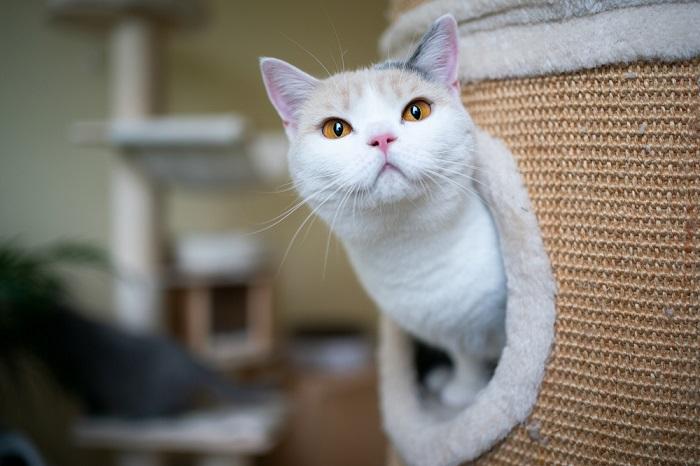
Any changes to your cat’s usual behavior warrant a visit to the veterinarian.
More often than not, sneaky behavior is nothing to worry about and can be chalked up to one of those cute cat quirks. However, if you have noticed your cat has had a significant behavior change, is hiding away from you more than usual, or seems to be acting strangely, it might be the sign of something more serious.
It is never the wrong choice to speak to your veterinarian, who will be able to work with you to rule out any medical issues and refer you to a licensed veterinary behaviorist if warranted.
Also Read: How To Pet A Cat – The 3 Basic Do’s And Don’t’s
Frequently Asked Questions
Why do cats hide and try to scare you?
If your cat is hiding away and then jumping out at you, it is more than likely they are including you in their playtime. Hiding and pouncing behavior derives from cats' natural hunting instincts that they hone during playtime.
Sometimes a cat might start excessively hunting or pouncing on owners as a sign of frustration or aggression. If you are worried your cat is acting out of a negative behavior rather than just playing, speak to your veterinarian.
Why has my cat started hiding suddenly?
If you have noticed a sudden change in your cat's behavior, such as hiding away or acting strangely, this can mean there is a problem. Changes in behavior can result from both behavioral and medical issues in cats. Therefore, it is always a good idea to make an appointment to see your local veterinarian if you notice a change in your cat's behavior.
They can help you rule out any medical worries and refer you to a licensed veterinary behaviorist if needed to determine what is causing your cat's behavioral change.
Why do cats try to be sneaky?
Cats are naturally very good at being sneaky. This behavior usually stems from a combination of their natural hunting instincts and their instincts to avoid being hunted themselves! Domestic cats also work in sneaky behavior into their playtime.
-
Hellyer, et al. (2007). AAHA/AAFP pain management guidelines in dogs and cats. Journal of Feline Medicine and Surgery. 9 466-480 DOI 0.1016/j.jfms.2007.09.001
-
Steagall, et al, (2022). 2022 ISFM Consensus Guidelines on the Management of Acute Pain in Cats. Journal of Feline Medicine and Surgery. 24:1 4-30 DOI https://doi.org/10.1177/1098612X211066268


